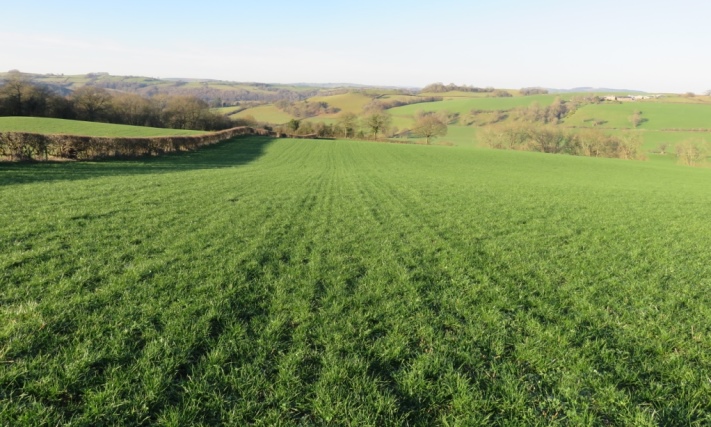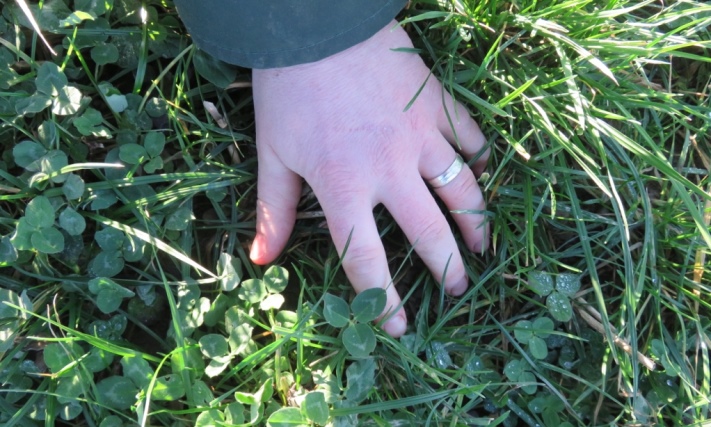Finding good alternatives to maize
A low milk price has driven one mid Wales dairy farm to go organic and maximise milk from grass and wholecrop
Mike Lloyd and his son Glenn are optimistic about the future, as several changes made recently to their 98ha dairy farm at Llandyssil, Newtown, Powys, seem to be making a difference.
“The really low milk price last April was a real driver for us to do things differently,” says Glenn. “We decided to go organic and to produce much more milk from what we grow in our fields.”
The Lloyds have 175 pedigree Holstein Friesian cows, which before conversion were producing more than 9,000 litres of milk, with just 1,800 litres coming from forage. The aim is to more than double this to 4,000 litres.
Maize has been grown on 16ha for 20 years, but only on the lower, drier corner of the farm. With the milk price at 33p/litre, the Lloyds felt they could justify growing it – but at 14p/litre they could not.
Cereal and protein mixture

Growing maize organically is tricky, particularly the weed control. After discussion with Osian Rhys-Jones of Oliver Seeds, in 2016 they decided to sow Barley Pro Plus wholecrop instead - a mixture of barley, maple peas, spring peas and spring vetch.
The three maize fields were mucked, ploughed, power harrowed three times and rolled twice, before the wholecrop mixture was drilled on May 1.
Broadsword Hi Pro, a four to five year grass ley with hybrid and intermediate ryegrasses, festulolium and white and red clover, was broadcast across the field on the same day. This grew up with the wholecrop, adding to the overall wholecrop silage yield, and providing another silage cut eight weeks later.
“We were struggling to get 41t/ha of maize at 28% starch,” says Glenn. “The barley, peas and vetch gave us almost 30t/ha in 12 weeks, with an added 10t DM/ha from the grass and clover.
“We were very worried about the wholecrop mixture smothering the grass, but it behaved perfectly,” says Mike. “After the final cut we grazed young store cattle until December and you could really see them grow.”
Alive with bees and insects

“Other benefits are the real time saving of not having to brush soil off the lane at maize harvest, and when the vetches and peas were in flower the field was alive with bees and insects – which never happened with the maize.
“The only downside was we have lost our fields for spreading slurry. We have invested in a 3.6 million litre slurry lagoon for storage, and the manure will be spread more evenly across the farm.”
The cows have fed well on the wholecrop silage and look healthy, with no displaced abomasums, unlike in previous years.
“We were always waiting for the maize silage to come in,” says Glenn. “The cows that needed serving at the end of the grazing season were losing out on energy and gave us poor fertility. I used to hate pregnancy diagnosis day because there would be so many empty cows. Having wholecrop ready to feed two months earlier has made a big difference.
“Our calving interval has fallen from 430 two years ago, down to 385 now.”
Concentrate feeds have been cut back from 3.2t per cow a year to 2.2t per cow, yet milk yields have only dropped to 8,000 litres. Cow intakes have been good and milk from forage has bounced up to 3,100 litres.
Forage wagon
Mike has bought a Pottinger Europrofi Combiline forage wagon so silage can be cut at any time to suit them. They can also zero graze fields early or late in the season, or in fields the cows cannot walk to.
“It’s all looking good so far,” says Glenn. “We feel we have jumped off the hamster wheel driving us towards having hundreds of cows, milking three times a day and employing lots of staff. We feel we have stepped back to go forward.
“This year we are also starting to reseed seriously around the farm – some fields have been down for more than 50 years. We are also starting to build tracks and fences to improve how we graze.
-and-Mike-(centre)-and-Osian-Rhys-Jones-711x427.jpg)
“We have learnt a lot from other farmers and go to many farm walks. We ask a lot of questions and listen to a lot to people like Osian and grassland consultant Chris Duller. It seems to be paying off!”
This is an edited version of an article that appeared in British Dairying in March 2017.
